"SEC | S20W2: How to cultivate a paddy"
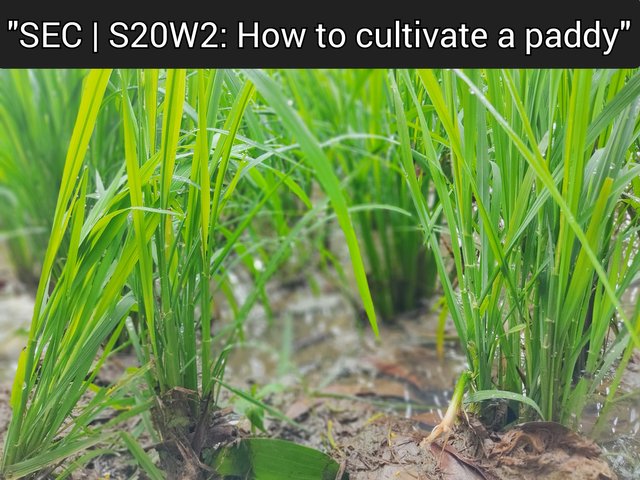 Thumbnail image made by polish
Thumbnail image made by polish
Wishing everyone good health. Hope you are all well. Today I came to participate in this wonderful engagement contest. The second week of season 20 is already here. An excellent engagement contest by this community is called "SEC | S20W2: How to cultivate a paddy". There are some questions asked in this contest and I will be a part of the contest by answering them correctly so let's start.
| Method of preparation of seed bed of rice time : |
|---|
Land selection and cleaning : First, land should be selected where water does not accumulate easily and the water supply is good. The land should be cleared of weeds, grass and other unnecessary objects.
Cultivation and ploughing : The land should be well cultivated with plow and harrow to make the soil loose and level.
Irrigation and wetting of land : Cultivated land should be irrigated lightly and the land should be kept well moistened.
Sowing seeds : The seeds should be cleaned and sprinkled on the prepared seed bed. Usually the seed bed is prepared 10-15 days before and then the seeds are spread evenly
Care and Irrigation : The seedling should be watered regularly and weeds should be removed. Excessive water should not be allowed to accumulate in the seedling.
| Steps to prepare soil for paddy cultivation : |
|---|
Land clearing and weed control : First weed and other unnecessary matter should be removed from the land.
Land Plowing and Cultivation : The land should be plowed deeply to loosen the subsoil layers. Then level the ground with a ladder.
Irrigation and keeping the land moist : Sufficient water should be given to the land to maintain the soil moisture. The land should be kept lightly flooded so that the seed bed is ready for planting.
Use of fertilizers : Sufficient organic fertilizers and chemical fertilizers should be mixed in the soil. It increases soil fertility and ensures good yield of paddy.
Extraction and planting of seedlings from seed beds : 25-30 days old seedlings are lifted from the seed bed and planted in the main land for cultivation. By following these methods, paddy cultivation is possible to get good yield.
| Importance of planting rice seeds at the right time : |
|---|
It is very important to plant rice seeds at the right time. Because it directly affects the yield and quality of crops. Some more important ones are mentioned below.
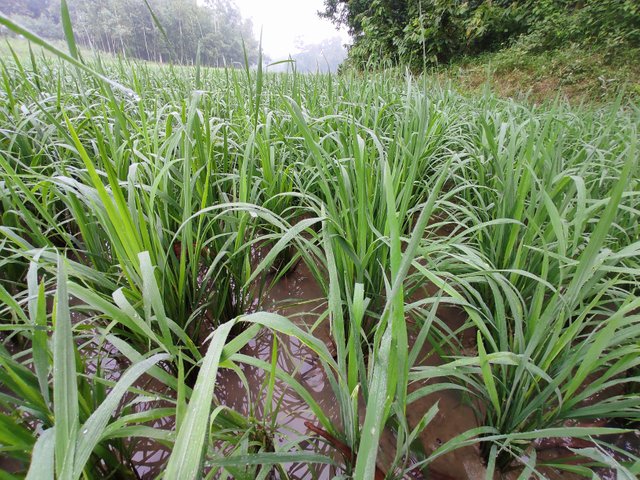
Planting rice at the right time allows the life cycle of the crop to adapt to the climate. It helps the crop to get enough sunshine, rainfall and temperature which is necessary for proper development. At the right time of paddy planting, there is less chance of insect and disease attack. Late planting may put the crop at greater risk. As a result the yield may decrease.
Planting at the right time makes it easier for the land to naturally get the water it needs for irrigation. This is especially important in rain-fed agriculture. Timely planting of rice ensures better development of the crop and leads to better yield. Late planting may result in lower crop yields. So planting rice seeds at the right time is essential to increase the quantity and quality of the crop.
Proper irrigation and fertilizer application after sowing of rice seeds is very important as they ensure healthy growth and good yield of rice. Here step by step method of irrigation and fertilizer application is mentioned.
| Irrigation regulations : |
|---|
For the first 2-3 days after sowing, the field should have little water to keep the soil moist. But it must be ensured that water does not accumulate. It is better to keep little water in the soil for 1-2 weeks after the seedlings grow. About 2-3 cm height of water should be kept. Adequate irrigation is required every week when the rice plant starts to grow. At this stage, 5-7 cm of water should be retained in the land. Today I went to all the paddy fields to check and video how much water there is. It rained a little yesterday but it will be normal.
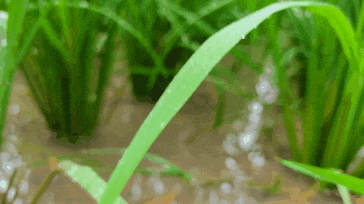 Captured by @max-pro
Captured by @max-pro
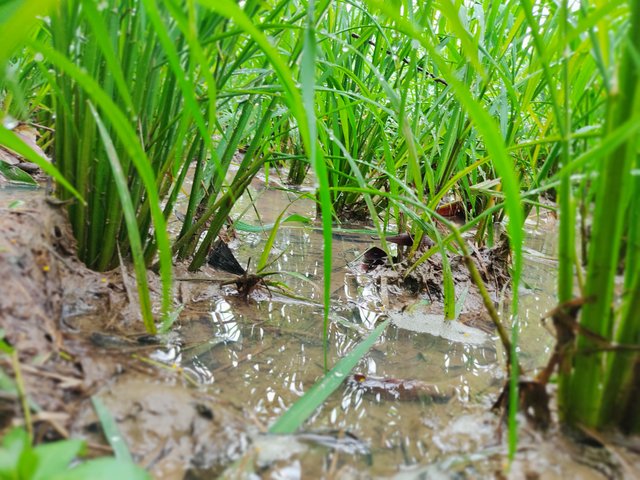 Captured by @max-pro
Captured by @max-pro
Flowering and paddy bearing time: Adequate irrigation is required during this period. It should be ensured that there is no shortage of water in the land. Then water should be stopped about 10-15 days before harvesting so that the land dries up and the paddy matures well.
| Fertilizer regulations : |
|---|
Initial Stage (During seed bed preparation) : Dung or organic manure can be used for seed bed first. 5-10 tons of dung manure should be mixed in the soil while preparing the soil.
7-10 days after transplanting : Urea fertilizer (nitrogen fertilizer) is applied for the first time. About 40-50 kg of urea fertilizer should be applied per bigha.
After 20-25 days : Second application of urea and other fertilizers. Also proper amount of phosphate (DAP) and potassium fertilizers should be applied as per requirement.
During paddy bearing : Urea can be applied once before flowering. However, one should try not to use excess fertilizer at this stage, as it may damage the quality of the rice.
| The major pests of rice crops are : |
|---|
Currant beetles
caterpillars
leaf-rollers
dung beetles
leaf-eaters
| Methods of pest control:- |
|---|
Pests can be controlled by increasing the presence of natural enemies like spiders, frogs, birds etc. as biological control. Bacillus thuringiensis (Bt) and Trichogramma insects can be used, which reduce the number of harmful pests.
Some pests can be directly collected and destroyed as mechanical control. Insects can be caught using pheromone traps and light traps.
Reducing the food supply of pests by planting other crops instead of rice as cultural control. Keeping weed free and field clean after harvesting. In addition, simultaneous cultivation can reduce the spread of pests.
Approved insecticides such as carbary, quinalphos or chlorpyrifos can be used as chemical control. But excessive use can be harmful to the environment. So should be used with caution.
Pest control can be achieved by applying integrated pest management (IPM) techniques combining various control methods. It combines chemical and biological methods which are environmentally friendly and sustainable. Thus it is possible to control rice pests by selecting appropriate methods.
| The main diseases of rice crop are : |
|---|
Rice Blast : It is a fungal disease that attacks leaves, guts and stems of rice. This can severely reduce rice production.
Bacterial Leaf Blight - BLB : This bacterial disease can dry up rice leaves and reduce crop yield.
Sheath Blight of Rice : This disease is caused by a fungus that causes spots on the stem and leaves of rice and weakens the plant.
Bacterial blight : This disease causes long spots on the leaves which then dry up and damage rice plants.
Rice Tungro Virus : This is a viral disease that causes yellowing and curling of leaves and reduces rice production.
 captured by @max-pro
captured by @max-pro
| Ways to control diseases :- |
|---|
Varieties of rice resistant to blast disease can be cultivated. Besides, providing adequate irrigation to the paddy field and keeping the paddy field dry reduces the spread of the disease. Leaf roll is a viral disease. Remove diseased leaves promptly and keep the soil clean.
For blast and blight diseases, active ingredient fungicides such as Tricloprix and Triclosan can be applied. Copper-based fungicides can be used to treat bacterial blight.
Proper application of fertilizers and nutrients is very important for disease prevention. Disease incidence is reduced by reducing nitrogen fertilization and using balanced fertilizers.
After harvesting, remove the crop parts left on the ground as they may contain disease pathogens. Cultivating other crops instead of repeatedly cultivating rice on the same land reduces disease pressure.
Choose healthy seeds as it is very important to use healthy and disease free seeds. The seeds can then be treated for disease resistance.
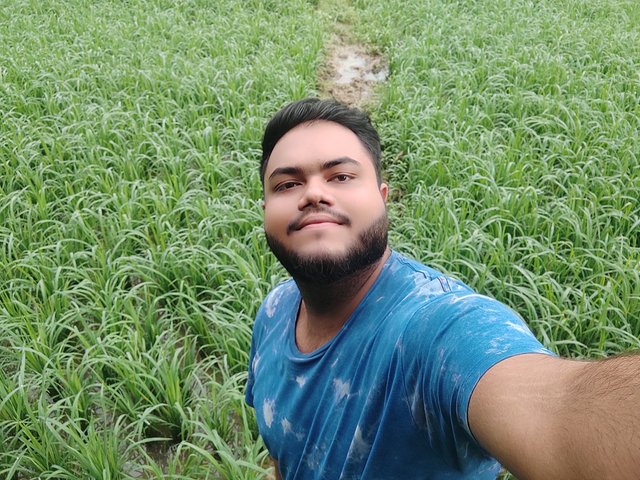
| Next steps after harvesting the paddy : |
|---|
A farmer cultivates very hard. So even after cultivating paddy some important steps have to be taken. I have given these steps serially below.
Threshing : Threshing is done after harvesting the paddy. This is the process where the grain is separated from the rice plant. Threshing can be done by machine or by hand.
Drying : After threshing, the grain should be dried well. If the moisture content of rice is high then it cannot be stored properly and the grain may spoil. Sun drying or machine drying can be used for drying.
Cleaning : After drying, the paddy is cleaned to remove dirt, straw, impurity grains etc. Clean grain is suitable for long-term storage.
Winnowing : Winnowing is the removal of light husks or other impurities from paddy. This can be done by air or machine. In our Bangladesh it starts from paddy fields.
| Rice conservation measures : |
|---|
Grain moisture is very important during rice storage. If stored at a moisture level of 12-14%, the grain remains good for a long time. If the grain is too moist, it may be attacked by insects or fungi. The storage place should be dry and clean. Before this, the warehouse or place should be thoroughly cleaned and disinfected with disinfectants to prevent any insect or fungal attack.
Various natural or chemical methods can be used to prevent insect attack on stored rice. Like using neem leaves or pesticides. Airtight bags or drums can be used to store paddy. Which helps to protect against moisture and insect attack.
The temperature and humidity of the warehouse needs to be controlled. High temperature and humidity can reduce the quality of rice. Therefore, rice grains should be regularly monitored during storage so that insect or fungal attack can be quickly addressed. By following these steps, post-harvest processing and storage of rice can be done successfully, which helps in maintaining the quality of the grain.

So I am Inviting my lovely Steemian friends @patjewell,@irawandedy, @o1eh @karianaporras, @shohana1, @bossj23, @sushanta83 to Participate in this Competition.
水稻是大自然的馈赠,它不仅养育了无数人,更象征着生命的延续与勤劳的结晶。每一粒米都凝聚着汗水与智慧,真的是极其伟大的存在。
Twitter share link : https://x.com/Maxpro51412/status/1836620899359035519?t=UOqiXH8ozZDpFfDfpIY3GA&s=19
水稻是大自然的馈赠,它不仅养育了无数人,更象征着生命的延续与勤劳的结晶。每一粒米都凝聚着汗水与智慧,真的是极其伟大的存在。
Upvoted. Thank You for sending some of your rewards to @null. It will make Steem stronger.
Welcome to the agro-learning challenge season 20.
Observations and suggestions:
. You have got a good explanation of all task questions. While preparation of seedbed and soil are important, we have to also ensure we plant at the right. These parameters help ameliorate most setbacks in paddy cultivation. In all, quality and quantity should be the goal at all stages.
. You have generally presented your post nicely.
We appreciate your participation and hope to see you in week 3.
Thank you very much for observing my post and giving such a valuable review.🥰🥰🥰
TEAM 5
Thanks @damithudaya for your support. Your valuable support encourages me to give my best. Respect for you always boss.
Hello! 🌾 I'm thrilled to see your explanation on paddy cultivation in this engagement contest! Your step-by-step approach to seedbed preparation, irrigation, and pest control is very informative. I especially appreciate your emphasis on the importance of timely planting and post-harvest processes like drying and cleaning. 🧹✨
The tips on maintaining grain moisture during storage are crucial for preserving quality. Great job covering all aspects of rice cultivation! Keep sharing your knowledge—it’s inspiring! 🙌🌟
Thank you so much for spending your precious time on this post and giving such a wonderful comment. I wish you success. Best wishes to you. 🥰
Thank you bro!